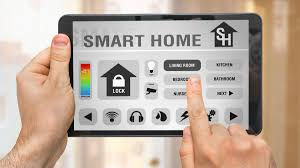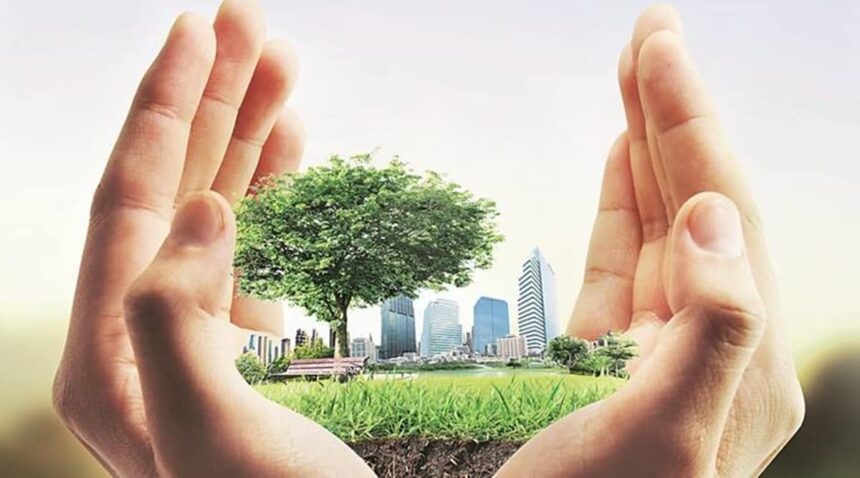As climate change and environmental concerns continue to grow, the real estate industry is undergoing a major transformation. Sustainable real estate is no longer just a trend—it’s a necessity. Developers, homeowners, and investors are increasingly prioritizing eco-friendly construction methods, energy-efficient designs, and environmentally responsible materials to create buildings that minimize their carbon footprint.
With rising demand for green homes and commercial spaces, sustainable real estate is shaping the future of urban development. From smart energy systems to eco-conscious building materials, this movement is not only benefiting the planet but also providing long-term financial savings and healthier living environments. Let’s explore how sustainable real estate is revolutionizing the way we build and live.
The Rise of Green Building Practices
One of the biggest drivers of sustainable real estate is the shift toward green building practices. Developers are now using energy-efficient designs, solar panels, and eco-friendly materials to construct homes and office spaces that reduce energy consumption and environmental impact. Buildings certified by organizations like LEED (Leadership in Energy and Environmental Design) or BREEAM (Building Research Establishment Environmental Assessment Method) are becoming the gold standard for sustainability.
Additionally, passive design techniques—such as maximizing natural light, improving insulation, and incorporating ventilation strategies—help reduce reliance on artificial heating and cooling. These innovations not only cut down on carbon emissions but also lower utility costs, making sustainable real estate a smart investment for homeowners and businesses alike.
Energy Efficiency: Reducing Consumption and Costs
Energy efficiency is a cornerstone of sustainable real estate. Modern homes and commercial buildings are being designed to optimize energy usage through smart technology and renewable energy sources. Solar panels, energy-efficient lighting, and smart thermostats are becoming common features in eco-friendly properties.
Beyond energy production, advanced insulation techniques, energy-efficient windows, and water-saving fixtures help reduce overall consumption. These improvements not only benefit the environment but also lead to substantial cost savings for property owners, proving that sustainability and financial efficiency can go hand in hand.
Eco-Friendly Materials: Building for the Future
Traditional construction materials often have a significant environmental impact, from deforestation to carbon emissions during production. Sustainable real estate focuses on using renewable, recycled, and low-impact materials to minimize harm to the planet. Bamboo, reclaimed wood, recycled steel, and low-VOC (volatile organic compound) paints are some of the materials gaining popularity in green construction.
Additionally, innovative materials like self-healing concrete and carbon-absorbing bricks are making buildings more durable and environmentally friendly. By choosing sustainable materials, developers can reduce waste, improve indoor air quality, and contribute to a healthier ecosystem.
Smart Homes and Sustainable Technology

The rise of smart home technology is playing a significant role in sustainable real estate. Home automation systems allow residents to monitor and control energy consumption, lighting, security, and even water usage from their smartphones. These systems make homes more efficient by adjusting settings based on real-time needs, reducing unnecessary energy waste.
Incorporating smart irrigation systems, rainwater harvesting, and greywater recycling can further enhance a property’s sustainability. As technology advances, integrating smart solutions with green building practices will become the standard for future real estate development.
The Financial and Health Benefits of Sustainable Living
Sustainable real estate isn’t just good for the environment—it also offers long-term financial and health benefits. Energy-efficient homes have lower utility bills, while eco-friendly construction materials improve indoor air quality, reducing the risk of respiratory issues. These factors make green homes more attractive to buyers and tenants, increasing property value and demand.
Furthermore, governments and local municipalities often provide tax incentives and rebates for energy-efficient upgrades and green building certifications. This means that investing in sustainable real estate can lead to financial savings in both the short and long term, making it a win-win for homeowners and investors.
The Future of Sustainable Real Estate
As urban populations grow and climate concerns intensify, sustainable real estate will continue to play a crucial role in shaping the future of cities. Developers are now exploring net-zero buildings—structures that produce as much energy as they consume—along with sustainable urban planning that prioritizes green spaces, walkability, and public transportation.
The real estate industry is also embracing circular economy principles, where materials from old buildings are repurposed rather than discarded. These innovative strategies aim to reduce waste, conserve resources, and create resilient, environmentally friendly communities.
Conclusion: A Greener Tomorrow Starts Today
Sustainable real estate is more than just a passing trend—it’s the foundation for a greener, healthier future. With advancements in energy-efficient design, smart technology, and eco-friendly materials, homeowners and investors have the opportunity to contribute to a more sustainable world while enjoying financial and health benefits.
As awareness of environmental issues grows, the demand for sustainable living will continue to rise. By making eco-conscious choices in real estate, we can reduce our carbon footprint, create healthier living spaces, and build a future that prioritizes both people and the planet. The shift towards sustainability in real estate is not just an option—it’s the way forward.
